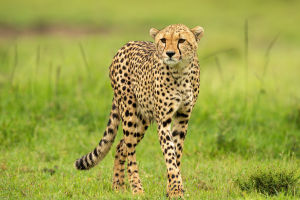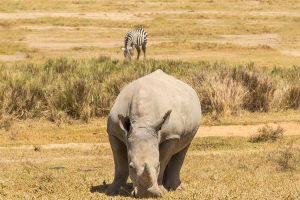The European hare (Lepus europaeus), known for its impressive speed and adaptability in its native Europe and parts of Asia, has found itself far from home in a new and challenging environment: Australia.
Originally introduced to Australia in the 19th century for recreational hunting, European hares have since become an invasive species, contributing to significant ecological disruptions.
The introduction of European hares to Australia dates back to the early 19th century, a period marked by European settlers' enthusiasm for replicating their homeland's familiar environments and pastimes.
European hares were brought to Australia in 1835 by settlers in Victoria, who hoped to establish a familiar hunting practice. However, the introduction of these hares into an unfamiliar environment had unforeseen consequences.
Initially, European hares faced limited competition and predation in their new Australian habitat. The conditions of Australia, with its vast open spaces and varied climate, seemed to offer a suitable environment for their proliferation.
Over time, the hares adapted to the Australian landscape, leading to a population explosion that would have profound impacts on the local ecology.
The European hare's in Australia has led to significant ecological changes. As a generalist herbivore, the hare's diet includes a wide variety of plant species, which has caused substantial damage to native vegetation.
In particular, hares have contributed to the decline of native grasses and shrubs, which are vital to the survival of many native species. Their feeding habits have led to habitat degradation, affecting not only plant communities but also the animals that depend on them.
One of the most concerning impacts of the European hare is its effect on Australia’s native wildlife. Many native species rely on the same food sources as the hares, leading to increased competition for resources.
The destruction of native vegetation has altered the habitat structure, making it less suitable for native animals. For example, species like the Eastern Grey Kangaroo and various ground-nesting birds face increased challenges due to the loss of their natural habitat and food sources.
The European hare's feeding also affects soil health. As hares graze extensively, they reduce the cover of vegetation that protects the soil from erosion. This erosion can lead to further habitat degradation and loss of biodiversity.
The introduction of non-native species like the European hare can disrupt ecological balance, leading to cascading effects throughout the food web.
Efforts to manage the European hare population in Australia have been challenging. Unlike some other invasive species, hares have proven difficult to control due to their adaptability and reproductive rate. Several strategies have been employed to address the issue, including hunting, trapping, and habitat management.
Hunting remains one of the primary methods for controlling hare populations. However, this approach has had limited success in significantly reducing hare numbers on a large scale.
Habitat management and restoration efforts aim to mitigate the damage caused by hares. By restoring native vegetation and implementing conservation measures, it is hoped that the effects of hare invasion can be lessened.
These efforts also focus on protecting and supporting native wildlife that has been adversely affected by the presence of European hares.


